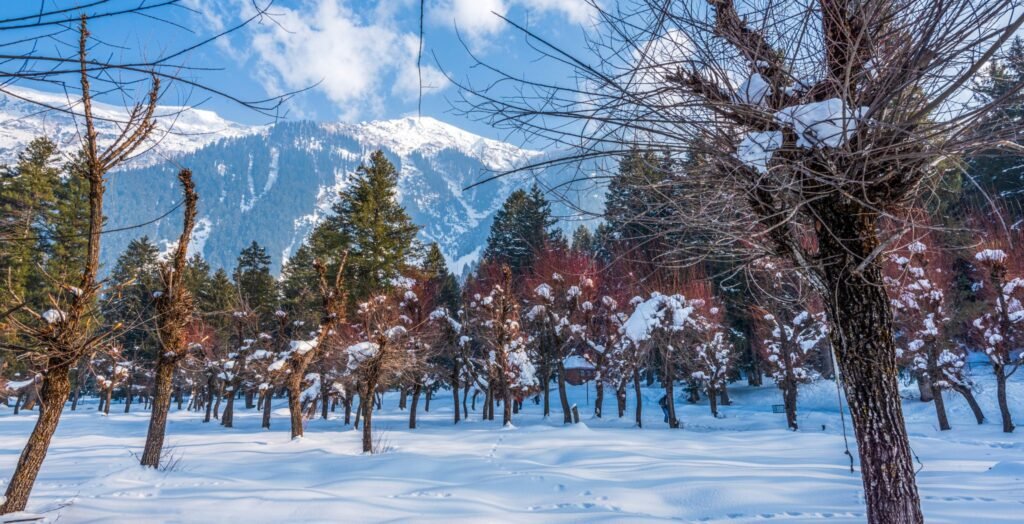The very name Kashmir inspires visions of snow-capped mountains, emerald-green valleys, glittering rivers, and an unsaid promise of peace and splendour. Known as “Paradise on Earth,” this northernmost part of India is well-known for its stunning natural scenery, lively culture, and serene spirituality.
While well-known tourist destinations like Gulmarg and Srinagar frequently take centre stage, the charming Betaab Valley is a more subdued gem nestled among Pahalgam’s picturesque landscapes.
Betaab Valley: Nature’s Canvas in the Heart of Pahalgam

The Betaab Valley, tucked away between thick pine trees and snow-capped Himalayan hills, offers a scene so serene and beautiful that it seems to have been taken straight out of a dream. This valley, which lies around 15 kilometres from Pahalgam in the Anantnag region of Jammu & Kashmir, is where nature whispers and time seems to stand still.
Blessed with sparkling streams, undulating meadows, and the enchanting Lidder River, the valley is the ideal place to unwind and reflect.
From Hajan to Bollywood Fame: The Legacy of Betaab (1983)

It was Bollywood’s classic romance “Betaab” (1983), starring Sunny Deol and Amrita Singh, that made Betaab Valley famous. The once-little-known Hajan Valley gained widespread recognition as Betaab Valley as a result of the film’s breathtaking scenery, which was filmed in this very location, captivating audiences all over India.
These days, Betaab Valley serves as a haven for nature enthusiasts, adventurers, and soul seekers, in addition to filmmakers and photographers. The Betaab Valley is a place where you may enjoy the fresh mountain air, go on a scenic hike, or just unwind by a peaceful stream.
The Background of Betaab Valley
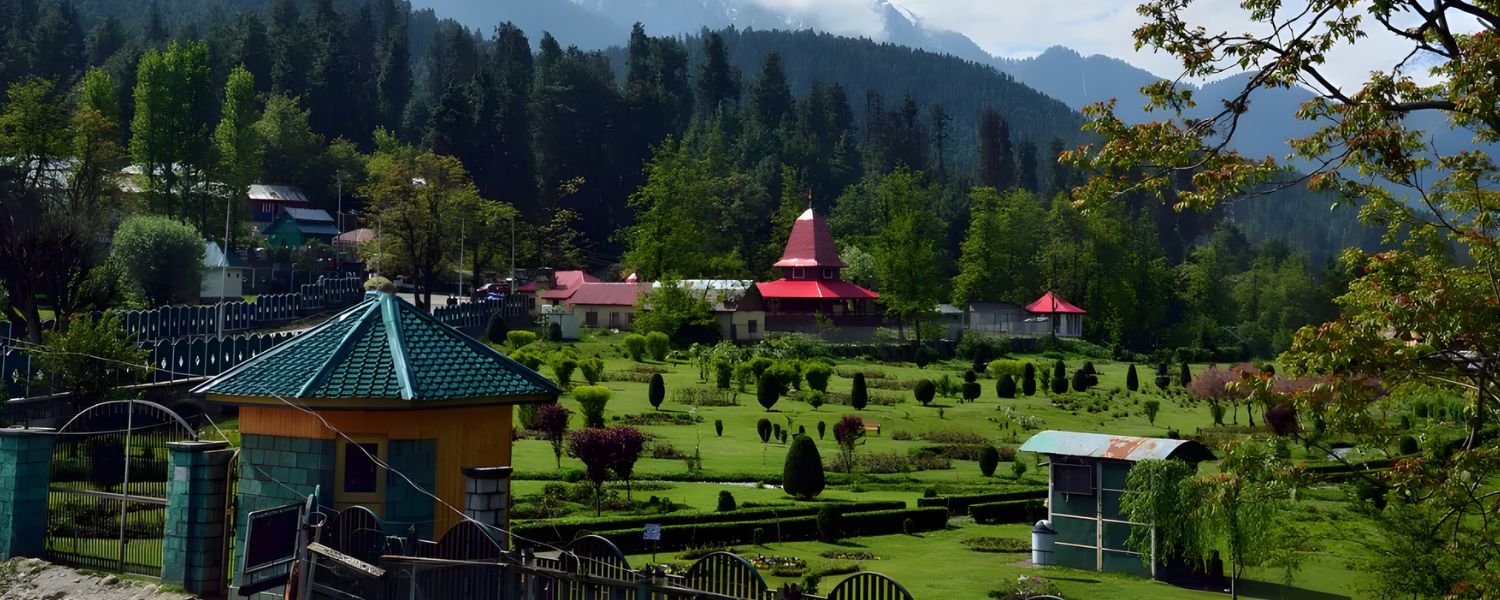
Betaab Valley was known as Hajan Valley until the glitz of Bollywood made it a well-known tourist destination. Locals loved this unspoiled, serene area in the foothills of the Himalayas, which was only known to those who knew the Pahalgam region.
The story of the transition from Hajan to Betaab combines cinema, cultural development, and scenic beauty.
From Hajan to Betaab: A Legacy of Bollywood
Much of the filming for Rahul Rawail’s 1983 Bollywood production “Betaab” took place in this valley. The film’s success was greatly influenced by its scenic backdrop, which included expansive views of meadows, rivers, and mountains.
The scenery captivated audiences nearly as much as the romance. Because of the close relationship, the valley was informally renamed after the film and is now commonly referred to as Betaab Valley.
Tourism was made possible by this film’s exposure. Over time, what was formerly a peaceful area frequented primarily by shepherds and locals evolved into a must-see location for tourists visiting Kashmir.
However, in spite of its popularity, the valley has managed to preserve its natural appeal and has not succumbed to commercialisation, which is uncommon in the current tourism environment.
Ancient Origins: A Historical Land
The Betaab Valley has historical value in addition to its superficial allure. According to archaeological research, people have lived in this area since the Neolithic Era. Early human settlement is evident in the valley and its environs, especially in the form of prehistoric farming, stone tools, and cave dwellings.
The renowned Silk Route, an antiquated system of trade routes between the East and West, historically included the Betaab Valley because of its advantageous location. As a transit area between Kashmir and Ladakh, the valley was vital to the exchange of products, cultures, and knowledge between traders, monks, and explorers. This added to its rich cultural fabric by placing it in the nexus of civilisation.
Regional Power and Mughal Influence
The valley was ruled by the Mughals in the fifteenth century, bringing with it cultural influences and architectural innovations that are still evident in neighbouring areas. The region was later ruled by Mirza Muhammad Haidar Dughlat, a Turko-Mughal military leader with close connections to Central Asian kingdoms, in the latter half of the century.
Under Dughlat’s rule, the area gained administrative clout and military organisation. He is credited with documenting many facets of Kashmiri geography and culture, and his impact shaped the region’s sociopolitical history.
Large-scale structures may not have been built in the Betaab Valley itself, but it was undoubtedly a part of the larger scheme of trade and power that ruled the area.
Identity and Legacy
The Betaab Valley now serves as a reminder of both the continuity of history and the beauty of the natural world. The valley has seen many different eras and stories, from Mughal generals and ancient settlers to Bollywood filmmakers and contemporary tourists. Its transformation from Hajan to Betaab reflects Kashmir’s own path, which is a synthesis of myth, history, culture, and tenacity.
Few people realise that they are strolling through land that has witnessed centuries of stories unfold, even if many come here to take pictures or stroll across the meadows. And maybe that is what adds to the uniqueness of Betaab Valley.
Natural Features and Scenic Beauty

A Living Canvas of Nature
Betaab Valley is more than just a destination — it’s an experience that engages all your senses. As you enter the valley, you’re greeted by a scene so perfect, it feels as though it was painted with intention and care.
Expansive green meadows gently slope toward the shimmering Lidder River, while pine and deodar trees stand tall on either side, guarding this natural treasure. The majestic snow-capped peaks of the Himalayas loom in the background, their reflection glistening in the clear river waters.
A Riot of Colors and Fresh Air
Every direction you turn reveals a burst of natural color — the emerald meadows, earthy forest tones, clear blue skies, and brilliant white mountaintops form a striking palette. During spring and early summer, wildflowers bloom in full force, painting the valley with shades of yellow, purple, and red.
These flowers attract butterflies, bees, and birds, creating a living, breathing ecosystem that enchants every visitor.
The air is crisp and aromatic, filled with the scent of pine and fresh mountain soil. As you walk quietly, you might hear the wind whispering through the trees, the gentle splash of fish in the river, or the melodic chirping of Himalayan birds. In a fast-moving world, this simple act of pausing and breathing deeply in Betaab Valley feels almost revolutionary.
A Paradise for Photographers and Artists
For photographers, Betaab Valley is a treasure trove of breathtaking moments. The changing light plays beautifully across the landscape, casting dramatic shadows and creating mirror-like reflections in the river.
Whether you’re focused on wide landscapes, delicate wildflowers, or wildlife in motion, every click of the camera captures raw, untouched beauty.
Artists and painters often visit Betaab Valley for inspiration. Many can be seen quietly sketching or painting near the river or in the shade of a pine tree. The shifting moods of the valley — from early morning mist to the golden glow of sunset — offer endless opportunities to capture nature’s poetry on canvas.
Mindfulness Amidst Mountains
Seeking peace and inner stillness? The valley offers the perfect environment for yoga, meditation, and reflection. Practicing by the river or beneath the towering trees can be a profoundly calming experience. The quiet atmosphere encourages a deep connection with nature and oneself, making it a favorite among spiritual travelers and wellness seekers.
The Ideal Time to Go to the Betaab Valley
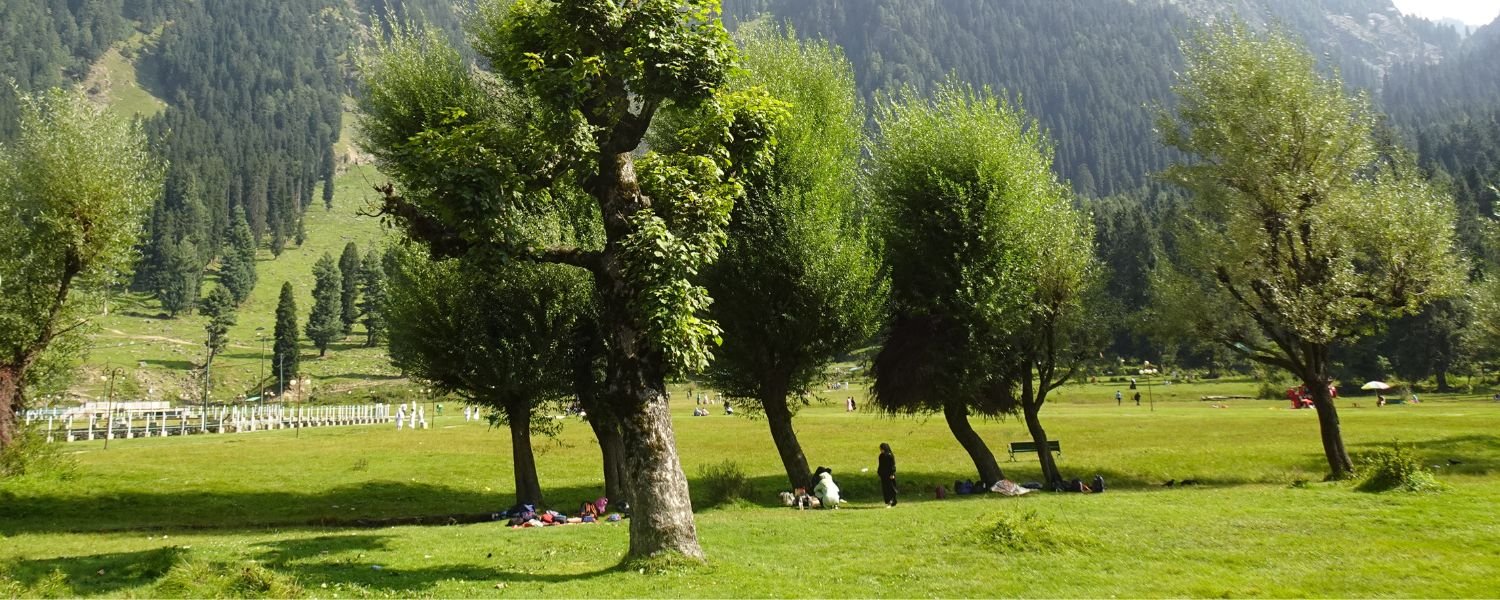
The fact that Betaab Valley is a year-round resort with distinct charms for every season is one of its most amazing features. There’s always a good time to go, whether you’re a snow lover, a flower hunter, or someone who appreciates golden autumns.
April through June is spring
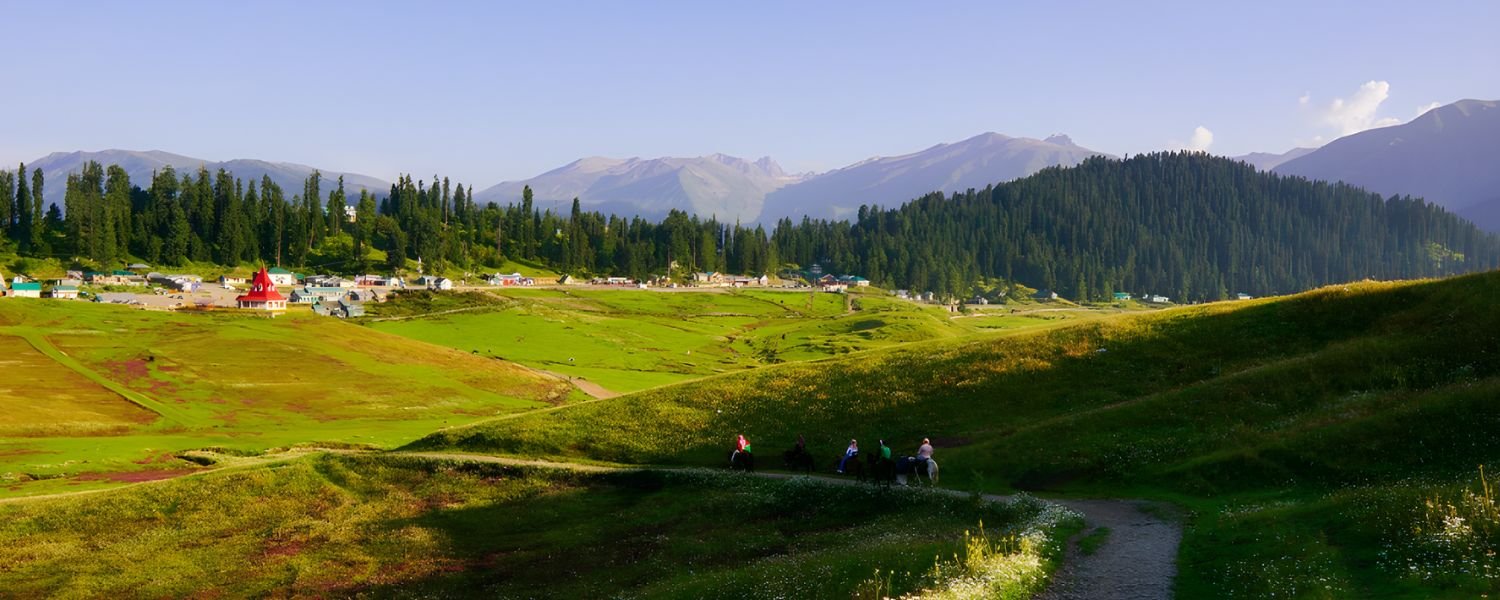
One of the valley’s most charming seasons is spring. The whole place comes alive with flowering flowers, new grass, and pleasant weather as the snow starts to melt. It’s a fantastic time for sightseeing, photography, and nature excursions.
The nice moderate temperatures, which range from 10°C to 20°C, make it perfect for exploration without bulky winter apparel.
How to proceed
leisurely strolls beside the river
Savour the lovely scenery and wildflowers.
Ideal for informal picnics and photography
Summertime (July through September)
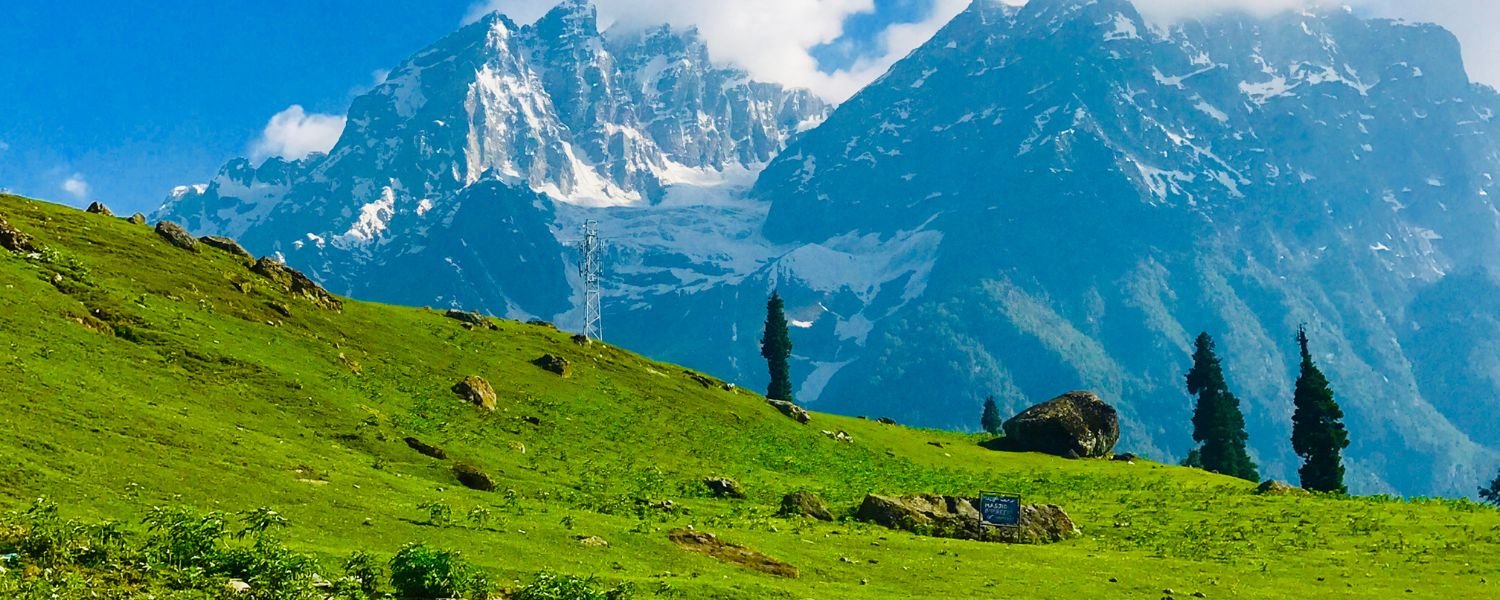
It’s warm but not hot in the summer. The sky is often bright blue, the meadows are completely green, and the Lidder River is fuller due to the melted snow. Trekking and outdoor exploration are comfortable due to the temperature range of 15°C to 30°C.
How to proceed
Trek to Tulian Lake and explore the surrounding regions.
Take pleasure in fishing and horseback riding in the Lidder.
Perfect for camping and family vacations
Autumn (October – November)
The Betaab Valley is breathtakingly beautiful in the autumn. The environment appears to be a live painting as the tree leaves change to vivid orange, red, and gold hues. The skies are typically clear, and the air gets crisp.
How to proceed
Photography of landscapes and foliage
Quick walks along the vibrant forest paths
Excellent for quiet retreats and artists’ retreats
Winter (December – March)

Winter transforms Betaab Valley into a peaceful, snowy haven for snow lovers. When the valley is covered in snow, it becomes a popular location for explorers and snow lovers. Visitors should wear warm clothing because temperatures can drop to -5°C or below.
How to proceed
Snowball battles and snow sledging
Photographs of the woods and the frozen river
Savour hearty regional cuisine while taking in the wintry surrounds.
Seasonal Travel Advice
Spring and Summer: Bring comfortable shoes, sunglasses, sunscreen, and light layers.
Autumn: Pack light jackets for the day and warm clothing for the evenings.
Winter: Pack waterproof jackets, warm clothing, and snow boots.
Before scheduling any outside activities, always consult the local weather forecast, especially during winter when snow may make access difficult.
Must-See Locations Close to Betaab Valley
The surroundings of Betaab Valley are just as breathtaking and provide a range of activities, from serene nature walks to daring treks, even if the valley itself is a place that will never be forgotten. To finish your Pahalgam tour, be sure to check out these neighbouring jewels if you’re considering a trip to Betaab Valley.
1. Aru Valley
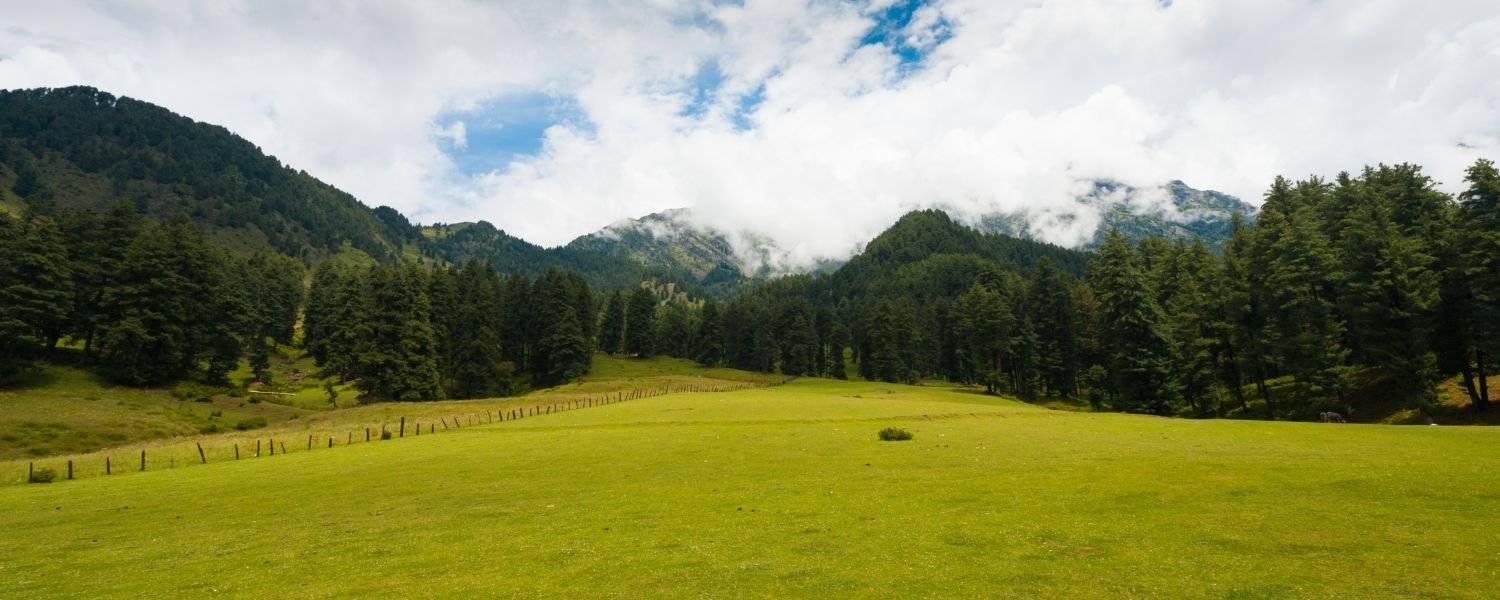
The approximate distance from Betaab Valley is 18.6 km.
About thirty to thirty-five minutes for travel
One of the most picturesque places in the area is Aru Valley, which is frequently referred to as a picture-perfect Himalayan settlement. This 2,414-meter-high valley, which is part of the Anantnag area, provides breathtaking views of the Lidder River’s cascade, snow-capped peaks, and verdant pastures.
The tranquil atmosphere of Aru Valley is what makes it unique. It is great for people who want to genuinely connect with nature because, in contrast to some other tourist-heavy locations, it is still largely unspoiled.
Activities in Aru Valley
Trekking

The Tarsar Marsar Lake Trek, Kolahoi Glacier Trek, and Katrinag Valley Trek are just a few of the well-known treks that use Aru as their base camp.
Camping
Take in the scenery while spending the night beneath the stars.
Riding a horse
Get a pony and ride through pine trees and meadows.
Fishing
Take a chance on some trout in the Lidder River.
From May to September, when the meadows bloom and the air is crisp and fresh, the valley is particularly colourful.
2. Tulian Lake
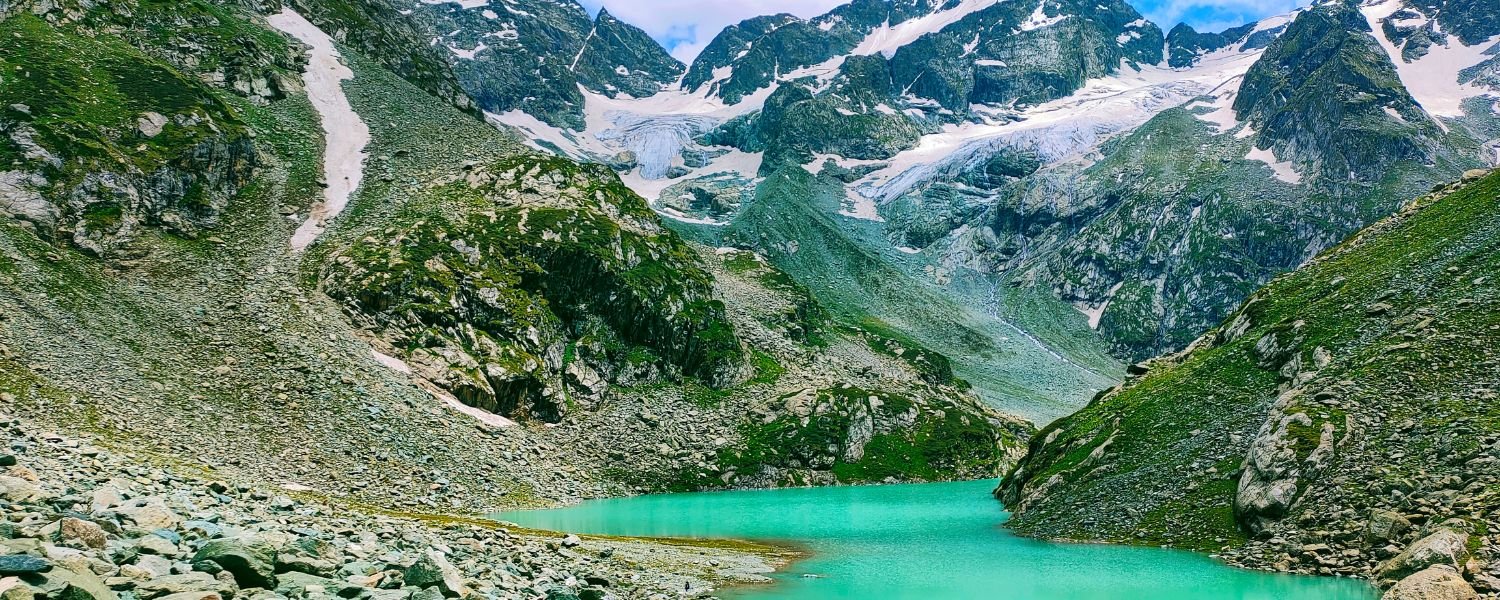
The approximate distance from Betaab Valley is 8.2 km.
Time Spent Travelling: 15 to 20 minutes by car, then hiking
Located between the Zanskar and Pir Panjal mountain ranges, Tulian Lake is a high-altitude alpine lake. The lake, situated at an elevation of 3,684 meters above sea level, is renowned for its turquoise waters, which reflect the surrounding snow-capped mountains.
The lake, which is shaped like the letter “8,” provides one of Kashmir’s most picturesque and tranquil settings.
Part of the challenge and allure of this place is the moderate to difficult hike you must take to get to the lake.
Activities at Tulian Lake
Trekking
The trip to the lake is just as stunning as the final destination.
Take pictures of landscapes, wildflowers, and reflections.
Camping
For a memorable night’s stay, pitch a tent close to the lake.
May through October is the ideal time of year to visit Tulian Lake before it becomes inaccessible due to severe snowfall.
3. Chandanwari
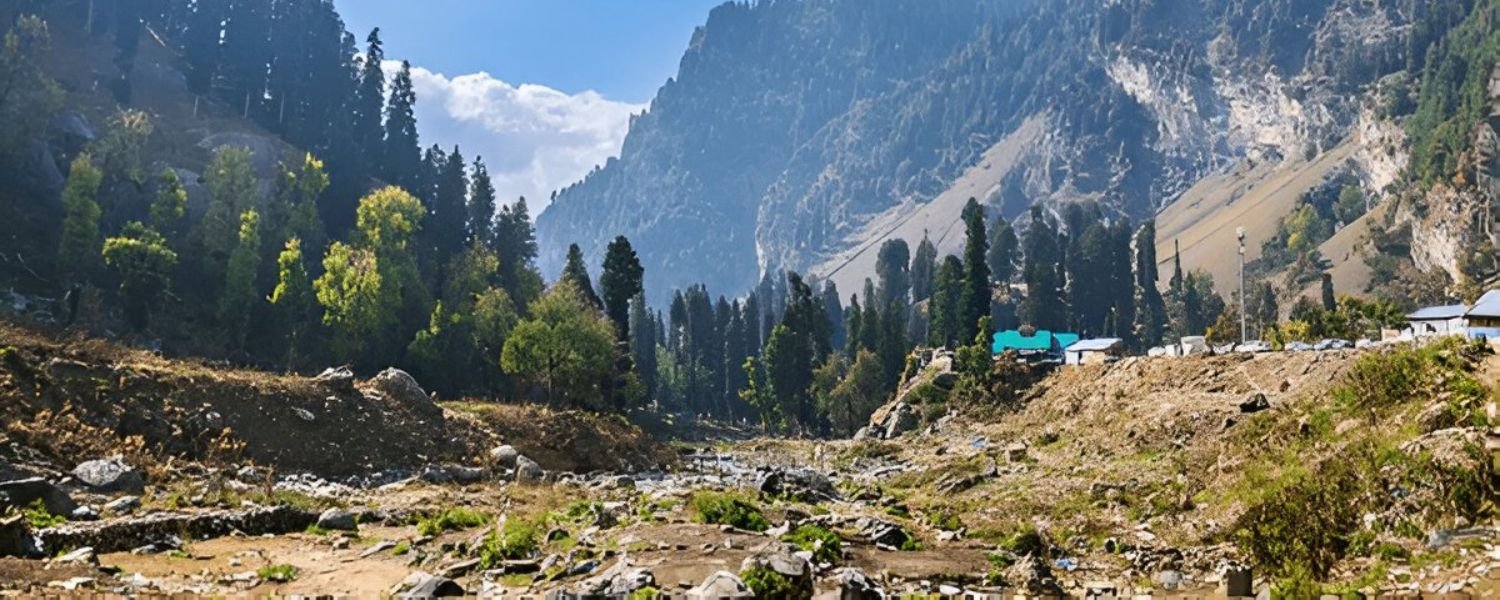
The distance is roughly 7.3 km from Betaab Valley.
Travel Time: approximately fifteen minutes
At roughly 2,895 meters above sea level, Chandanwari is a high-altitude valley that is well-known for being the beginning site of the Amarnath Yatra, a revered Hindu pilgrimage that attracts thousands of pilgrims annually.
This serene location, which is surrounded by snow-capped peaks and glaciers, has spiritual significance in addition to being a wintertime adventurer’s paradise.
Activities in Chandanwari
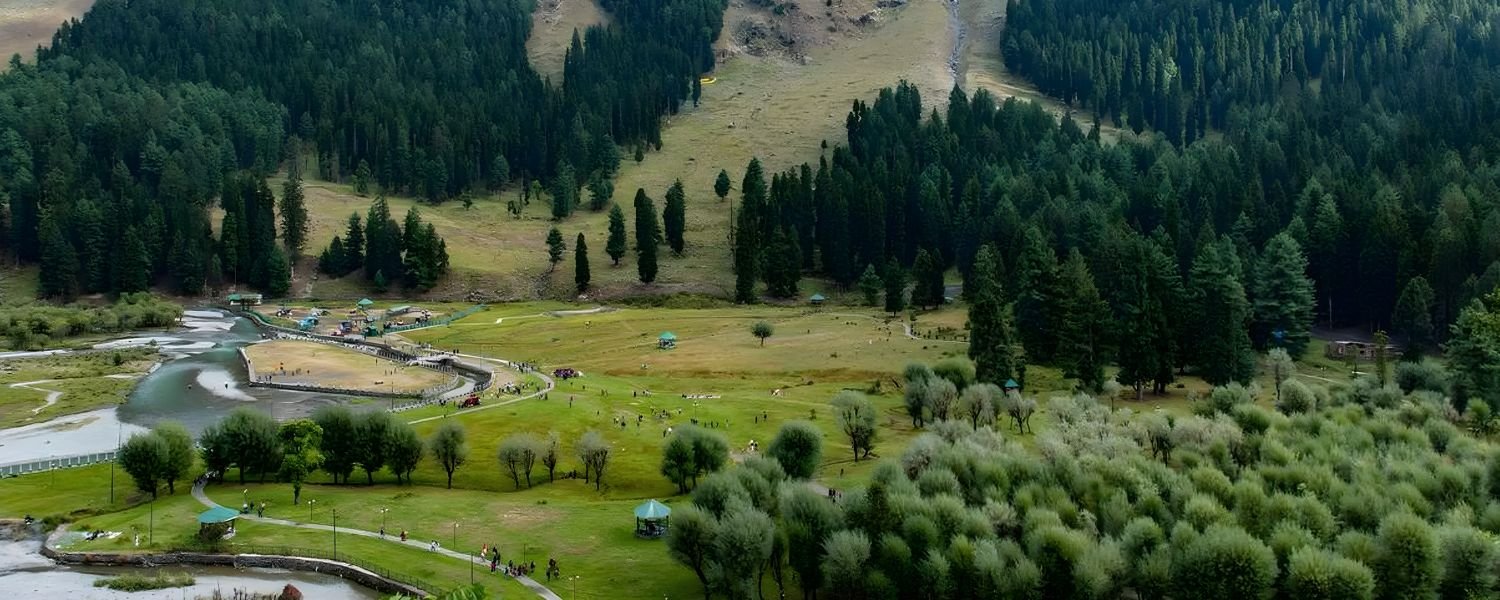
Snow Sledging
Use traditional sledges pulled by locals to glide down mild slopes.
Explore the Glacier
You may get up close and personal with icy landscapes on short hikes.
Sheshnag Lake

Only a hike from Chandanwari, this 3,574-meter-high lake is encircled by snow-capped peaks and offers a peaceful alpine setting.
The best seasons to visit Chandanwari are March through April for snow activities and June through August for pilgrimage.
Pahalgam Town
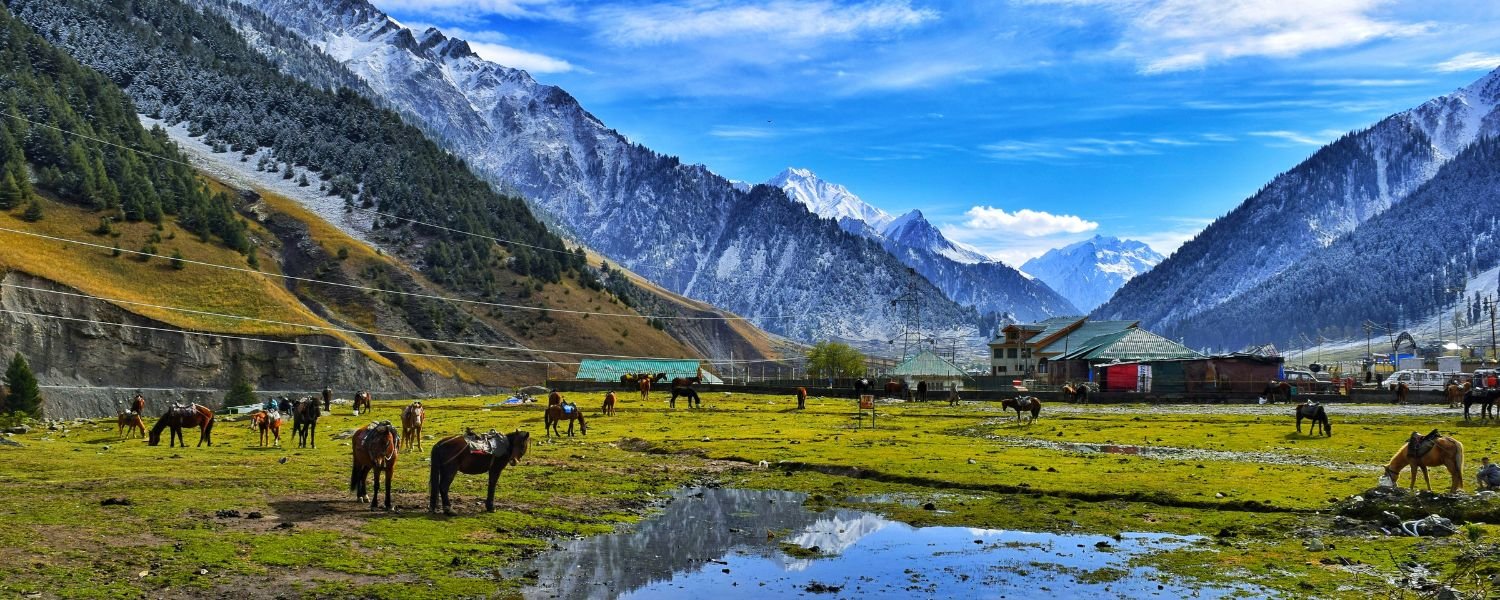
Pahalgam is the primary base for all regional exploration and is only a short drive from Betaab Valley. This quaint town, which offers everything from quiet riverbank cafes to local markets, is culturally rich. Pahalgam is the ideal fusion of comfort and nature, whether you’re riding a pony through the woodland trails, purchasing Kashmiri handicrafts, or drinking traditional kahwa.
Activities to Do in Pahalgam
Local markets
spices, saffron, handcrafted wooden products, and woollen shawls.
Pony rides are a fun way to see the surrounding trails and beautiful scenery.
Cafes & Food
Sample regional specialities like Gustaba, Rogan Josh, and street munchies.
Betaab Valley Itinerary Tip
Pahalgam is a convenient place to stay because most tourists arrange their journey to Betaab Valley as a half-day excursion from Pahalgam.
How to Get to the Valley of Betaab
Because Betaab Valley is close to Pahalgam, which has excellent air, rail, and road connections, getting there is not too difficult.
By Air
The closest airport to Betaab Valley is Srinagar International Airport (SXR), which is roughly 96.3 kilometres away. Major cities like Delhi, Mumbai, Bangalore, and Chandigarh are all connected to Srinagar.
From the airport
You can use a shared taxi service or rent a private taxi.
The drive, which offers picturesque views of valleys, rivers, and pine trees, takes roughly two and a half to three hours.
By Train
About 87 kilometres from Betaab Valley is Srinagar Railway Station, the nearest train station. For passengers arriving from within Jammu & Kashmir, it is still a convenient choice even if it is not as crowded as Jammu Tawi station.
From the station
To get to Pahalgam, use a local bus or hire a taxi.
Depending on the weather and traffic, the trip takes about two hours.
By Road
The most picturesque and absorbing method to get to Betaab Valley is probably by car. The approximately 110-kilometre journey from Srinagar to Betaab Valley goes through:
Awantipora – Known for its ancient Hindu temples.
Anantnag – A lively district with markets and food stops.
Aishmuqam – A spiritual site popular with locals.
Betaab Valley is about a 15-kilometre drive from Pahalgam. There are plenty of shared jeeps, autorickshaws, and taxis.
Local Transportation Advice
You can rent from neighbourhood taxi stalls or reserve prepaid taxis at Srinagar Airport.
For those on a tight budget, shared jeeps and minivans also commonly go between Anantnag and Pahalgam.
To save trouble at the last minute during the busiest travel season, think about scheduling transport in advance.
Scenic Road Experience Tip
Travelling throughout the day will allow you to take in the expansive vistas of verdant valleys, meandering rivers, and winding mountain routes. Every traveller’s dream is to take pictures along the journey, so don’t forget to do so.
Outdoor Recreation & Adventure in the Valley
The Betaab Valley is a natural playground for outdoor enthusiasts. This valley offers something for everyone, whether you’re an adventurer or just want to enjoy the peace and quiet of nature.
Trails for Trekking
Numerous short and long walking trails in the area begin or end in the Betaab Valley. Offering sweeping vistas of the Himalayan mountains, the area is the starting point for treks to Tulian Lake, Aru Valley, and even the Kolahoi Glacier.
Because of their varying degrees of difficulty, the paths are appropriate for both novice and expert hikers.
At every bend, the routes offer breathtaking views as they meander through dense pine forests, beside riverbanks, and emerge into expansive meadows.
Photographic Locations & Undiscovered Views
The Betaab Valley is a treasure trove for photographers. Photographs of birds silhouetted against snow peaks, mist flowing across the grasslands, and early morning light reflecting on the Lidder River are sure to be memorable.
Don’t overlook
The river bend at sunset.
macro photos of springtime wildflowers in the area.
views from above (if allowed by local authorities using drones).
Walking for leisure and picnicking
Many wide meadows and shady areas are available, making them ideal for picnics with loved ones. Many tourists just relax by the river with a mat and some refreshments. Leisurely walks are made easy and revitalising by the walking pathways and level terrain.
Observing Birds and Interaction with Flora and Fauna
The biodiversity of the valley is abundant. Bring binoculars so you can see Himalayan birds such as:
The flycatcher from Kashmir
Monal Himalaya
The brown dipper
In spring and early summer, the valley bottom is covered with alpine herbs, mushrooms, and wildflowers that will delight flora enthusiasts.
Activities for the Winter
The Betaab Valley becomes a beautiful wonderland when it snows. Traditional sledging experiences, in which wooden sledges are pulled across the snow, are provided by locals. In addition, you can engage in snowball fights, snow treks, and snowman construction. Just be careful to dress appropriately for the cold.
Pop Culture & Film in the Betaab Valley
Despite being a natural wonder, Bollywood, India’s renowned film industry, is mostly responsible for Betaab Valley’s notoriety.
The Film That Started It All: Betaab (1983)
Nearly all of the filming for the romance movie Betaab, which starred Sunny Deol and Amrita Singh, took place in this charming valley. Audiences were moved by the film’s stunning scenery, which instantly made the valley famous.
As “Betaab Valley” grew in popularity and eventually became the official name, its former name, Hajan Valley, vanished.
Well-Known Songs Recorded Here
The picturesque meadows and riverbanks served as the backdrop for a number of the film’s romantic and poignant songs, including:
“Jab Hum Jawan Honge”
“Teri Tasveer Mil Gayi”
Together with the area’s natural beauty, these songs made Betaab Valley a popular destination for honeymoons and romance.
Additional Bollywood Associations
Many directors have returned to this valley for song sequences and scenic shots since Betaab’s fame. The valley has gained popularity as a filming site in India, even though not all of the films are as well-known.
An Icon of Romance
Today, Betaab Valley is regarded as a romantic retreat because of its film heritage. Couples, honeymooners, and anybody else looking for a beautiful, emotional environment love it.
Accommodations in the Betaab Valley Area
Selecting the ideal lodging when travelling to Betaab Valley can enhance the quality of your visit. Although there aren’t any hotels in the valley itself, there are plenty of options in the nearby town of Pahalgam.
Luxury Hotel
You want style and comfort, think about:
With views of the river, the WelcomHotel by ITC offers first-rate amenities.
Pine-n-Peak by Ahad Hotels is well-known for its expansive balconies and exquisite timber décor.
With a hint of luxury, the Chinar Resort & Spa is a tranquil haven.
Low-Cost Hotels
Pahalgam is home to a number of inexpensive hotels and guesthouses that offer tidy, uncomplicated rooms with the necessities:
The Volga Hotel
Hotel Pari Mahal
Hilltop Hotel
These are ideal for families, short-term visitors, and travellers.
Experiences in the area and homestays
Choose a homestay for a more personal, culturally immersive experience. You’ll gain firsthand knowledge of the customs, way of life, and hospitality of the area, and hosts frequently serve regional Kashmiri food.
Travel Advice for Accommodations Near Betaab Valley
Reserve a room in Pahalgam, which is only 15 km from Betaab Valley.
Steer clear of last-minute reservations during the busiest times of the year (May–July & December–January).
To improve your mornings, pick a location that offers a glimpse of a river or valley!
Advice for New Arrivals
Getting ready to visit Betaab Valley for the first time? Here are some crucial pointers to ensure a seamless and pleasurable visit:
Things to Bring
Trekking shoes, a camera, a hat, sunglasses, sunscreen, and light clothing for spring and summer.
Autumn: Light coats, evening woollen clothing, and skincare products that are high in moisture.
Winter: Waterproof outerwear, gloves, thermals, snow boots, and heavy woollens.
Wear layers and modest clothing.
Kashmir has a traditional way of life. It’s advisable to dress appropriately and wear layers of clothing because of temperature fluctuations.
Drink Plenty of Water and Bring Snacks
Since there aren’t many eateries or a big store in Betaab Valley, bring:
Bottles of water
Bars of energy
Light fare for your walk or picnic
Safety & Local Etiquette
When shooting pictures of locals, ask them first and greet them politely.
Don’t stray into forbidden zones.
Although travelling alone is usually safe, you should always let someone know where you are going.
Honour nature
Don’t litter; take your trash with you.
Follow designated trails.
Avoid disturbing wildlife or picking flowers.
Frequently asked questions
1. What gives it the name Betaab Valley?
The 1983 Bollywood movie Betaab, which was filmed in the valley, gave it its name. It was formerly called the Hajan Valley.
2. Can I travel to the Betaab Valley during the winter?
Indeed! The valley becomes a snowy paradise throughout the winter months of December through March. It’s ideal for winter photography, sledging, and snow hiking.
3. Are families and lone travellers safe there?
Of course. Pahalgam and the Betaab Valley are generally safe for all kinds of tourists. Simply observe local norms and take the usual safety precautions when travelling.
4. Does entering the Betaab Valley require a permit?
Indian tourists do not require any special licenses. Foreign visitors may need to inquire about local travel regulations, particularly if they are going to nearby restricted border areas.
5. What is the ideal duration for my stay in Betaab Valley?
The average visitor stays in the valley for two to three hours. To have a picnic or catch the sunset, nature enthusiasts and photographers might want to extend their stay.
